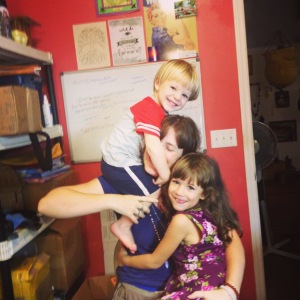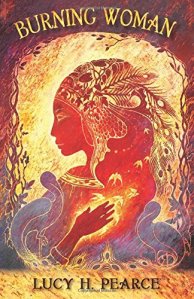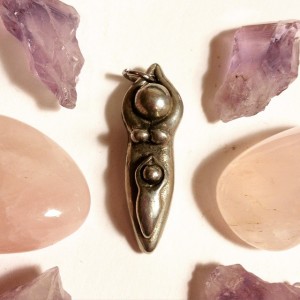 “Women’s liberation must be mothers’ liberation or it is nothing.”
“Women’s liberation must be mothers’ liberation or it is nothing.”
–Germain Greer, in The Whole Woman, quoted in Liberating Motherhood
Since I have three homeschooled children (ages 6-13) and one toddler (2) who are all home full-time, as well as a home business, I often fell asleep with the book Liberating Motherhood in one hand and  my nursing toddler asleep on the other arm. However, the mark of how much I liked a book can be told most reliably, not by my eventual typed review, but by the number of pages whose corners have been turned down. In case you can’t tell in the picture, that means that Liberating Motherhood is a winner. Complex. Witty. Wry. Assertive. Bold. A detailed manifesto of maternal feminism.
my nursing toddler asleep on the other arm. However, the mark of how much I liked a book can be told most reliably, not by my eventual typed review, but by the number of pages whose corners have been turned down. In case you can’t tell in the picture, that means that Liberating Motherhood is a winner. Complex. Witty. Wry. Assertive. Bold. A detailed manifesto of maternal feminism.
Liberating Motherhood is a fairly heavy read, made readable and engaging by Vanessa’s deft way with words, sharp wit, and clear explanations. It covers broad themes and weaves together issues of justice, ecofeminism, politics, and socialization in sections titled A Mother’s Body, A Mother’s Mind, a Mother’s Labour, and a Mother’s Heart. The core of the book is the argument that many mothers wish to actively mother their young children and yet are wholly unsupported in doing so. Patriarchy’s answer is subordination of women into a caregiving role that has no monetary or economic value or respect. Contemporary feminism’s answer is “full female employment” and outsourcing of childcare into a universal daycare system. Olorenshaw is assertive that the answer to the “problem of mothers,” is not more daycare, but rather more social and economic support, including a basic income. She is willing to tackle the classist assumptions that work outside of the home is inherently fulfilling for women, noting that the ability of women in the upper socieconomic status to “lean in” rests fully on the backs of lower paid, overworked women who are doing the work that no one else wants to do. However, she does not glamorize or romanticize the role of a stay-at-home mother either, exploring in-depth the economic and social vulnerability that women are placed in by depending on the income of a partner and exploring the potential for abuse and exploitation that results from this common social model.
I have consciously self-identified as a feminist since I was 13. After giving birth for the first time at  24, I became immersed in the writing and world of “mother’s rights,” and at this time, became rebirthed as a maternal feminist. My spiritual path is that of a goddess-feminist and I have been also immersed for years on a goddess path that is firmly feminist in orientation. Since my feminism has been entwined for a long time with my mothering and with goddess-spirituality, I sometimes found that Vanessa was arguing against a type of feminism which I find mostly unrecognizable, or almost more of a caricature of feminism than that which I have found in my work in the world. In fact, one of my favorite quotes from a book of feminist thealogy is feminists make the best mothers. (Charlotte Caron, To Make and Make Again). I also write for the feminist blog, Feminism and Religion, and while there have been a few notable exceptions, the majority of writers there seem to embrace a maternally-inspired/influenced feminism, unlike some of the writers and leaders encountered by Olonrenshaw. I don’t find that as many contemporary feminist thinkers and writers ignore the issues of mothers and maternity as much as she asserts. I would also have liked to see some coverage of the life structures and experiences of women like me who find their solution combining mothering while working for themselves. I have long said that I am not looking for an “or,” but for the “and,” mothering while also working on other tasks!
24, I became immersed in the writing and world of “mother’s rights,” and at this time, became rebirthed as a maternal feminist. My spiritual path is that of a goddess-feminist and I have been also immersed for years on a goddess path that is firmly feminist in orientation. Since my feminism has been entwined for a long time with my mothering and with goddess-spirituality, I sometimes found that Vanessa was arguing against a type of feminism which I find mostly unrecognizable, or almost more of a caricature of feminism than that which I have found in my work in the world. In fact, one of my favorite quotes from a book of feminist thealogy is feminists make the best mothers. (Charlotte Caron, To Make and Make Again). I also write for the feminist blog, Feminism and Religion, and while there have been a few notable exceptions, the majority of writers there seem to embrace a maternally-inspired/influenced feminism, unlike some of the writers and leaders encountered by Olonrenshaw. I don’t find that as many contemporary feminist thinkers and writers ignore the issues of mothers and maternity as much as she asserts. I would also have liked to see some coverage of the life structures and experiences of women like me who find their solution combining mothering while working for themselves. I have long said that I am not looking for an “or,” but for the “and,” mothering while also working on other tasks!
Published by Womancraft Publishing, Liberating Motherhood takes on not only the patriarchy, but neoliberal capitalism and modern feminism as well in a complex brew of social critique, call to action, values-exploration, and manifesto. Unapologetically assertive and with a large dose of wry wit and candor, Olorenshaw explores the many ways in which an insidious social and cultural web is woven that simultaneously devalues and ignores women’s unpaid work, yet benefits greatly from its fulfillment.
“The problem is, for all the talk of women’s liberation, when it is predicated on liberation from motherhood, it is no liberation at all. When feminism is based on ideas of equality which ignore the actual reality of her life, her deep wish to care for her children, and deny the value of caring, a mother is in chains. We need to get going on liberating motherhood. We can say loud and clear that: ‘I don’t need liberating from motherhood: motherhood needs to be liberated from a system which devalues it, devalues us and devalues our children.”
–Vanessa Olorenshaw, Liberating Motherhood

 1970’s and 1980’s. I’ve been extremely fond of birth (activism) books written during that time period because they seem much less apologetic than books written today as well as much less concerned with appearing “biased” towards unmedicated birth (or various other topics). I also love women’s spirituality books of that era and while I’ve read a small handful of maternal activism books written in that time period, I haven’t read many about feminism itself. So, I recently finished reading a passionate, short collection of essays called Our Blood: Prophecies and Discourses on Sexual Politics, by Andrea Dworkin (1976). In it, of course, this section on birth and courage caught my eye:
1970’s and 1980’s. I’ve been extremely fond of birth (activism) books written during that time period because they seem much less apologetic than books written today as well as much less concerned with appearing “biased” towards unmedicated birth (or various other topics). I also love women’s spirituality books of that era and while I’ve read a small handful of maternal activism books written in that time period, I haven’t read many about feminism itself. So, I recently finished reading a passionate, short collection of essays called Our Blood: Prophecies and Discourses on Sexual Politics, by Andrea Dworkin (1976). In it, of course, this section on birth and courage caught my eye:

 their own house. My parents are getting ready to have an epic celebration party of their fortieth year of homesteading here in Missouri. We celebrated the 21st anniversary of our first date, I turned 37, and enjoyed Mother’s Day this month. Zander’s tenth birthday is right around the corner and both of my parents’ birthdays too. Mark had a vasectomy last month, so our childbearing years have fully closed and I feel really great about that decision. I still haven’t heard anything back about my dissertation (4 months now!). We also took a mini vacation to Big Cedar Lodge on Table Rock Lake and took the kids to the Dinosaur Museum in Branson.
their own house. My parents are getting ready to have an epic celebration party of their fortieth year of homesteading here in Missouri. We celebrated the 21st anniversary of our first date, I turned 37, and enjoyed Mother’s Day this month. Zander’s tenth birthday is right around the corner and both of my parents’ birthdays too. Mark had a vasectomy last month, so our childbearing years have fully closed and I feel really great about that decision. I still haven’t heard anything back about my dissertation (4 months now!). We also took a mini vacation to Big Cedar Lodge on Table Rock Lake and took the kids to the Dinosaur Museum in Branson.














